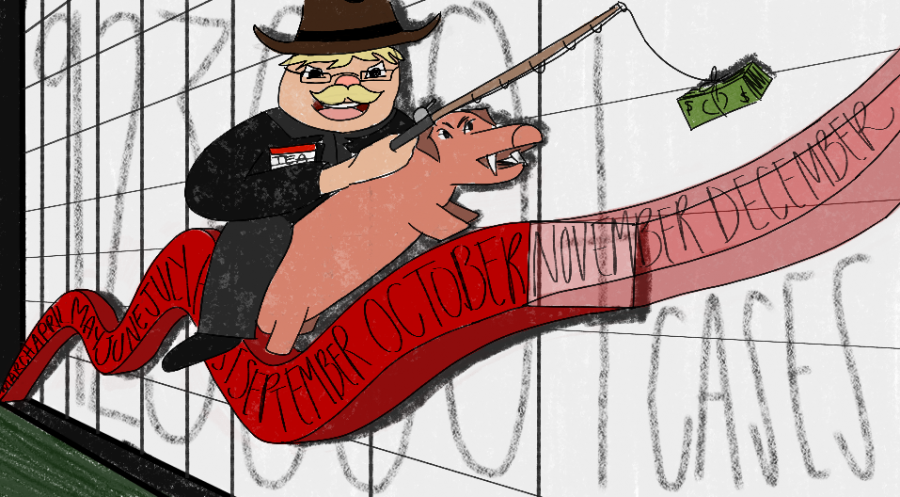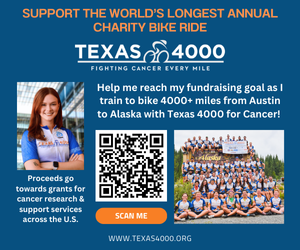It’s time to back off, not speed ahead
We want to go back more than anything, but if we rush it, we risk wasting precious time and spreading the virus
The Texas Education Agency’s threats to cut funding have led the district to require that high schools abandon learning groups for in-person students in favor of regular classes with classroom changes during passing periods. The change is unsafe and puts teachers in the difficult position of having to teach in-person and virtual students at the same time.
November 3, 2020
We’re not ready to take the next step in reopening schools.
Pressure from the Texas Education Agency’s threats to cut funding has prompted the district to advance on their school reopening phase-in plan. Starting today, in-person students, who are currently learning in small, confined learning groups, will begin rotating between their classes as they would in a normal school setting.
This plan comes from a place of concern for student’s educational needs but will end up causing even more problems. Absent from the plan are the two things we need to prioritize right now in the reopening debate: safety and sustainability.
It may seem counter-intuitive, but the only way we can effectively return to a conventional school system is if we can minimize the spread of COVID so that safety isn’t at risk when social distancing can’t be guaranteed. With COVID cases continuing to rise nationwide, coupled with weather cooling off and flu season lurking right around the corner, the risk of spreading the virus is already greatly multiplied. Add in shared classrooms and hallway traffic during passing periods, and this risk becomes much higher. When students begin rotating classes in person, athletes, who already have high contact with other teams will be unable to stay in specific “team pods,” and will be in contact with much wider circles within school.
Safety aside, this plan puts teachers who are already spread-thin in an even more difficult position, where they will not only be teaching to a Zoom screen, but to in-person students as well. A responsible return to in-person learning is a hefty task during an unprecedented and unpredictable time. But, while virtual school is definitely the safer option, it doesn’t come without drawbacks of its own.
If they haven’t already, parents and students alike are starting to feel the negative effects of virtual learning. It’s been almost seven months since McCallum students have been in a conventional classroom setting. The technological inequities, mental health strains and educational quality concerns that come with online school have raised valid concerns. Without the interactive aspects of school, students are missing out on emotionally formative learning experiences.
This is especially troubling for the transitional years—kindergarten, sixth grade and freshman year—students go to school not only to learn the curriculum but to learn how to collaborate and interact with their peers. As we get older, school helps us develop a sense of independence and self-sufficiency that is critical to our growth into successful adults.
Online school simply cannot provide this as well as in-person school can. These are issues that must be addressed as quickly as possible, but rushing the process of reopening now is not the way to do that.
For one thing, more exposure now will surely lengthen the time that we spend in this gray area between quarantine and post-COVID life. While there is deliberation between where to go from here, most everyone can agree that this current lifestyle isn’t working. If we take the next steps too quickly, we’re going to continue to perpetuate this awkward state, lengthening the time left to endure the challenges of a global pandemic.
For now, we need to rekindle the same urgency we had back in March, when we seemed aware of the gravity of our situation. Instead of spending time and money on the logistics of returning in-person, AISD should focus its efforts on giving teachers the resources to continue to create a positive virtual experience for their students.
While in-person learning helps to combat the inequities of virtual school, switching classes is an unnecessary risk for all involved. In the end, no amount of money or planning on behalf of the district will excuse the fact that advancing in-person school, especially in a critical time for the virus, is not a safe option. So please, TEA, stop putting us in greater danger by forcing schools to pretend we are in post-COVID times when we most assuredly aren’t. Let us all stay safe so we can return to school without risk to our health when the time is right.





Victor Madres • Nov 13, 2020 at 3:11 pm
I agree with you. The Texan Education Agency should threaten the district and force them to open up especially now as Covid-19 cases skyrocket. It’s hypocritical to close schools when theirs only hundred cases currently and to open schools when their is a hundred cases daily. Regardless of the importance of in person education we need protect students and staff and their family from getting infected.
Jaella Brush • Nov 4, 2020 at 8:46 pm
I agree with this article because sending students back to school increases the risk of the virus spreading. People are more likely to get the virus if they are put in a group setting and right now we definitely need to prioritize everyone’s’ safety. Having all of these people rush into school is pretty pointless since it will just cause more covid cases and prolong the progress we have already made to overcoming this virus. If we just focus on keeping everyone safe instead of trying to get all students into school as soon as possible, then we can get through this.
Naomi Di-Capua • Nov 4, 2020 at 1:31 pm
I think that this article perfectly puts into words as to what AISD needs to be doing to help protect teachers and students. In places like Germany, France, and Italy the schools and countries were on extreme knockdown for weeks and they were able to get a hold of the COVID situation, and we must be the next to follow if we want to get past this. Despite the difficulty that learning from home can pose on students, teachers, and parents lock down isn’t something that was just made up, it is there to help. So just as this article says, even if not going to in person school is hard the more we stay home the faster this will be over.